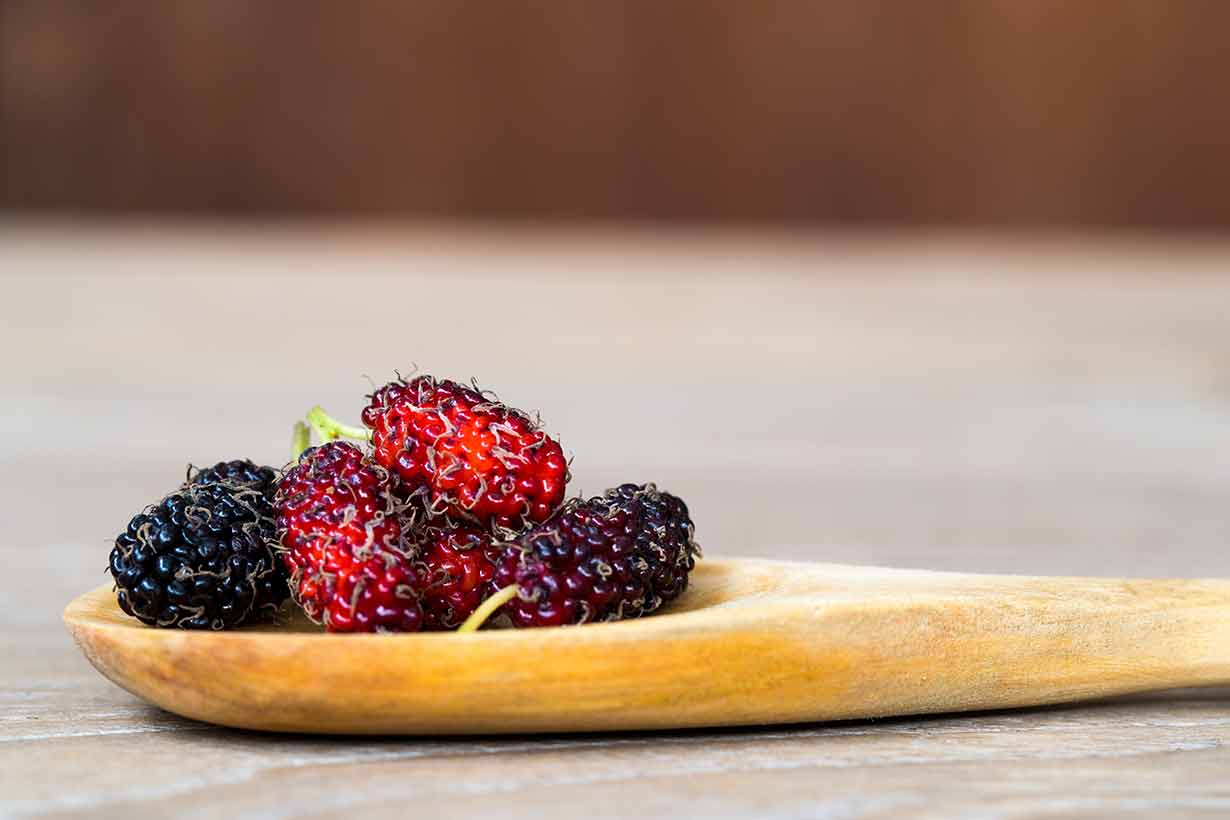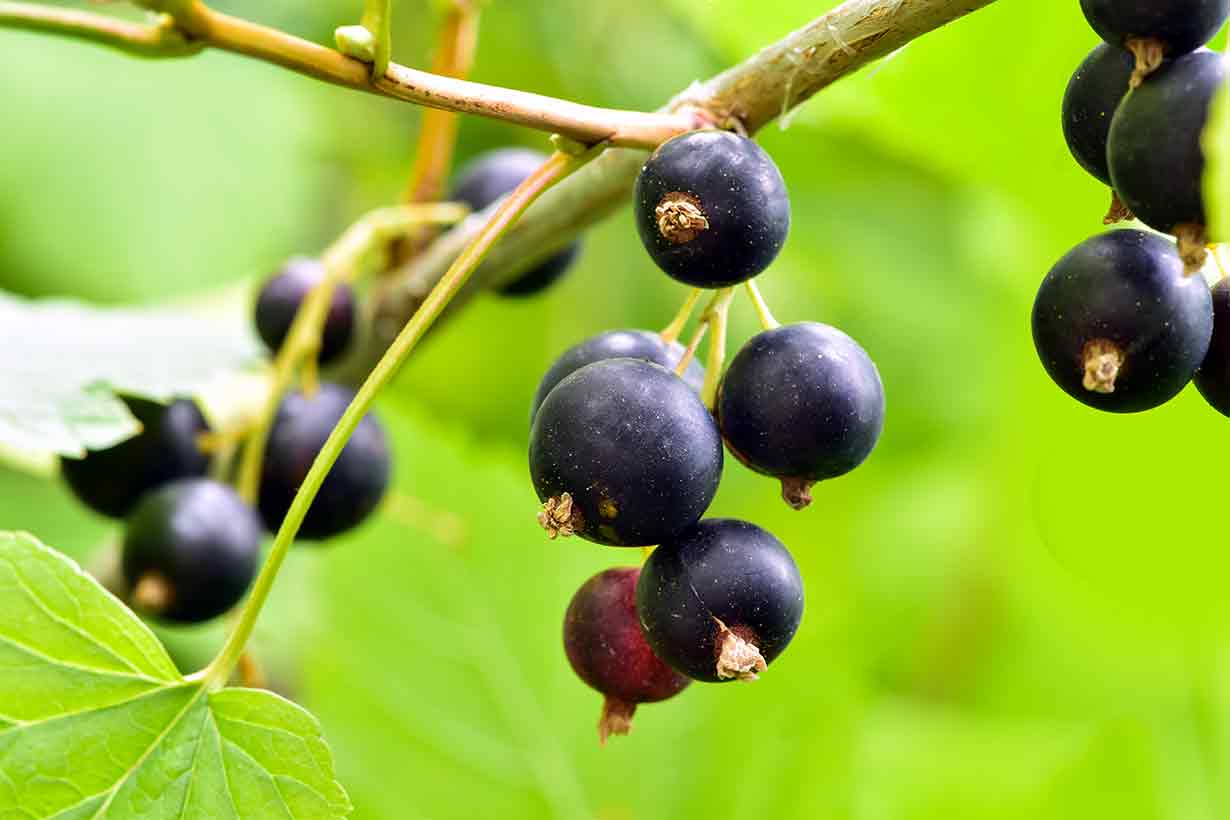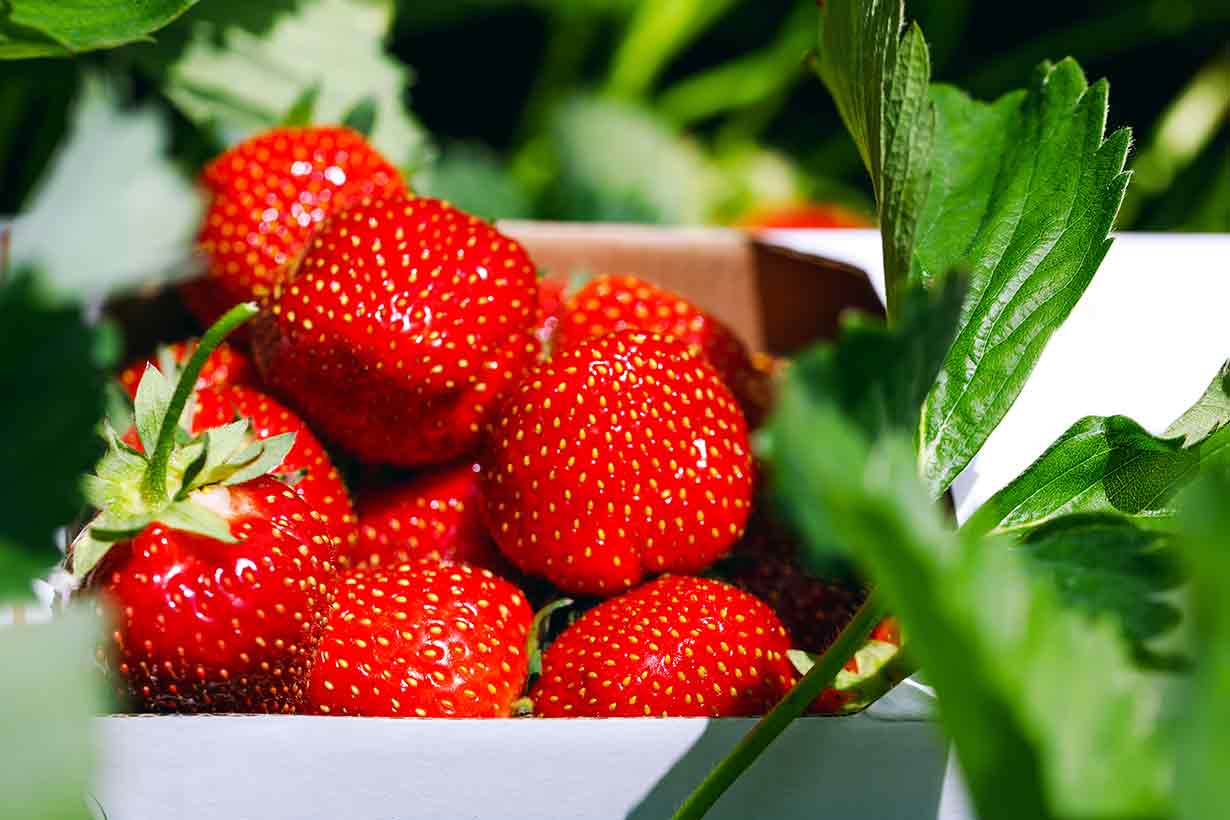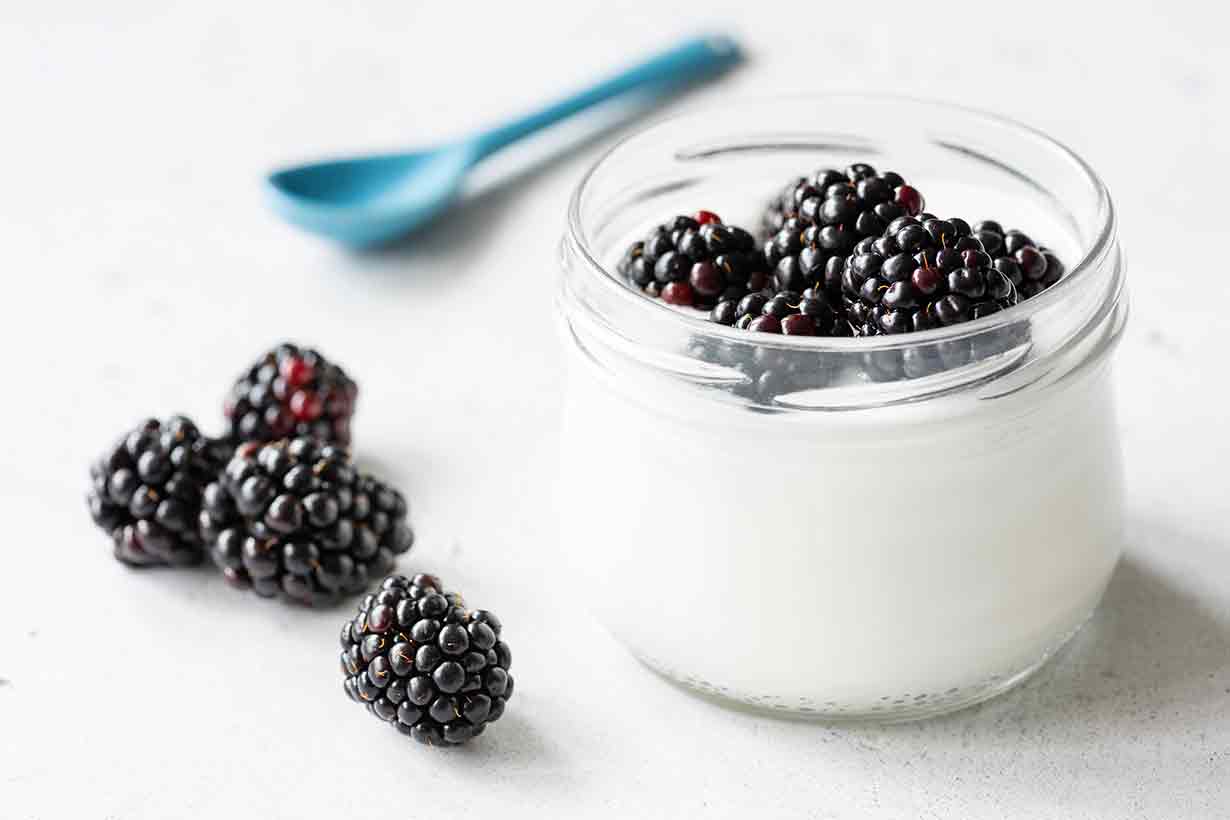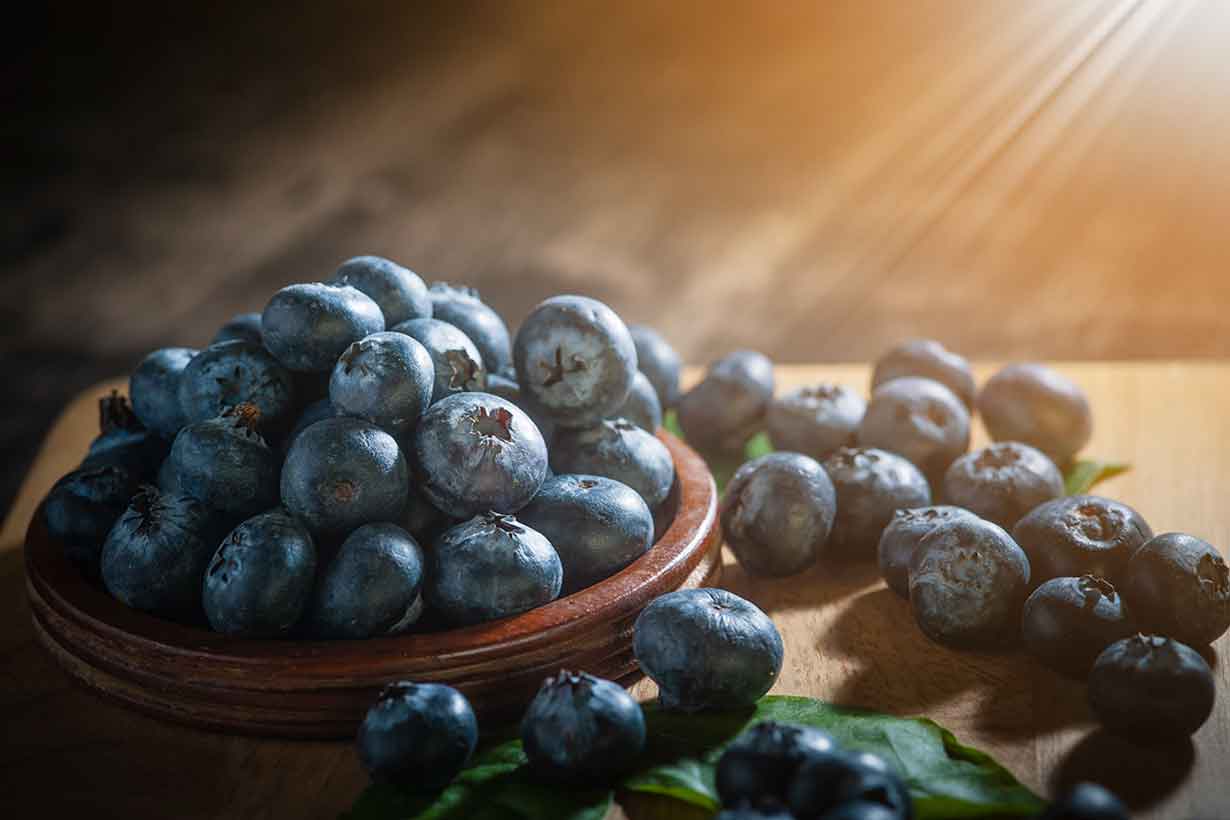Red raspberries are popular for their delicious taste and are packed with essential nutrients and polyphenols.
Red raspberries may also offer several health benefits resulting from their nutritional composition.
This article provides a guide to these potential health benefits of red raspberries alongside their complete nutritional properties.
Nutritional Composition of Red Raspberries
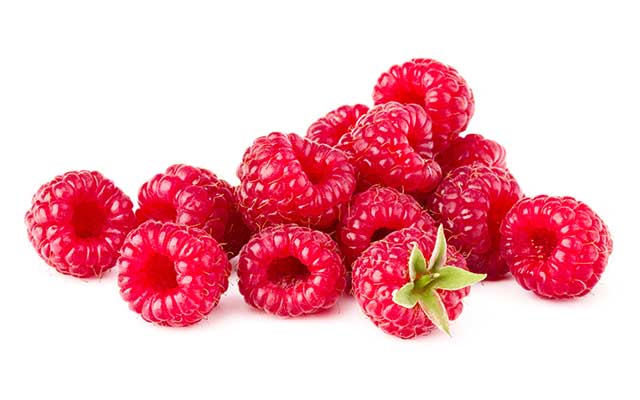
Raspberries come in many colors and varieties, including red, purple, black, golden yellow, and even white. Interestingly, black raspberries are an altogether different species of raspberry.
However, this article refers to red raspberries, the most popular variety in the world today.
The nutrition tables below show the full nutritional values of raspberries per 123-gram cup serving. The source of nutritional data is the USDA’s FoodData Central database (1).
Percent daily values (% DV) have been calculated using the FDA’s published daily values (2).
Nutrition facts
| Name | Amount | % Daily Value |
|---|---|---|
| Calories | 64 kcal | |
| Carbohydrates | 14.6 g | 5.3% |
| Fiber | 8.0 g | 28.6% |
| Sugars | 5.44 g | |
| Fat | 0.80 g | 1.0% |
| Saturated | 0.02 g | 0.1% |
| Monounsaturated | 0.08 g | |
| Polyunsaturated | 0.46 g | |
| Omega-3 | 0.16 g | |
| Omega-6 | 0.31 g | |
| Protein | 1.48 g | 3.0% |
| Cholesterol | 0 mg | 0% |
As the table shows, red raspberries have a low calorie content. They are also relatively low in carbohydrates, despite providing high fiber.
The fat and protein content of raspberries is very low.
Vitamins
| Vitamin | Amount | % Daily Value |
|---|---|---|
| Choline | 15.1 mg | 2.7% |
| Folate, DFE | 25.8 mcg | 6.5% |
| Vitamin A, RAE | 2.46 mcg | 0.3% |
| Vitamin B1 (thiamin) | 0.039 mg | 3.3% |
| Vitamin B2 (riboflavin) | 0.047 mg | 3.6% |
| Vitamin B3 (niacin) | 0.736 mg | 4.6% |
| Vitamin B5 (pantothenic acid) | 0.405 mg | 8.1% |
| Vitamin B6 (pyridoxine) | 0.068 mg | 4.0% |
| Vitamin B12 (cobalamin) | 0 mcg | 0% |
| Vitamin C | 32.2 mg | 35.8% |
| Vitamin D | 0 mcg | 0% |
| Vitamin E | 1.07 mg | 7.1% |
| Vitamin K | 9.59 mcg | 8.0% |
A cup serving of raspberries provides a significant amount of vitamin C and a small to moderate provision of numerous other vitamins.
Minerals
| Mineral | Amount | % Daily Value |
|---|---|---|
| Calcium | 30.8 mg | 2.4% |
| Copper | 0.111 mg | 12.3% |
| Iron | 0.849 mg | 4.7% |
| Magnesium | 27.1 mg | 6.5% |
| Manganese | 0.824 mg | 35.8% |
| Phosphorus | 35.7 mg | 2.9% |
| Potassium | 186 mg | 26.6% |
| Selenium | 0.246 mcg | 0.4% |
| Sodium | 1.23 mg | 0.1% |
| Zinc | 0.517 mg | 4.7% |
Red raspberries contain high levels of manganese and potassium, a moderate amount of copper, and a range of minerals in smaller amounts.
Potential Health Benefits of Red Raspberries
There are several potential benefits that raspberry consumption may have on our health.
Here is a summary.
1) Heart health: raspberries may improve vascular function
Some studies suggest that raspberry consumption may benefit vascular function, thereby improving cardiovascular health.
Interestingly, a 2018 randomized controlled trial using “dietary achievable amounts of red raspberries” demonstrated a substantial improvement in endothelial function (2).
Endothelial function is a term that refers to how the cells within the lining (endothelium) of the arteries and veins (including within the heart) are functioning. Research has demonstrated that endothelial function is important for heart health and lowering cardiovascular risk (3, 4).
When functioning well, endothelial cells help to control blood flow, dilation of the veins and arteries, and help to prevent platelet aggregation, a key process in abnormal clotting (5).
In this study, participants consuming 200 grams of red raspberries showed “significant improvements in flow-mediated dilation (FMD)” two hours (and up to 24 hours) after consuming the raspberries.
The researchers concluded that the polyphenols within red raspberries, such as ellagitannins, could be responsible for this effect.
Prior studies using high-dose extracts of raspberry powder showed similar results in improving endothelial function (6).
2) Brain health: potential cognitive benefits
Researchers have shown that habitual diet plays a role in overall health and cognitive health outcomes (7, 8, 9).
In this regard, the overall dietary pattern is key.
However, certain foods and compounds within the diet may have a protective effect on cognitive health.
For example, a 2018 randomized controlled trial suggested that ellagitannins may improve cognitive performance in middle-aged adults (10).
Alongside anthocyanins, ellagitannins are red raspberries’ most concentrated bioactive polyphenols (11).
Furthermore, a systematic review published in 2021 examined the findings from randomized controlled trials studying the effect of berry anthocyanins on cognitive performance. This study found that berry anthocyanins significantly and positively impacted improved memory performance (12).
3) A good source of vitamin C
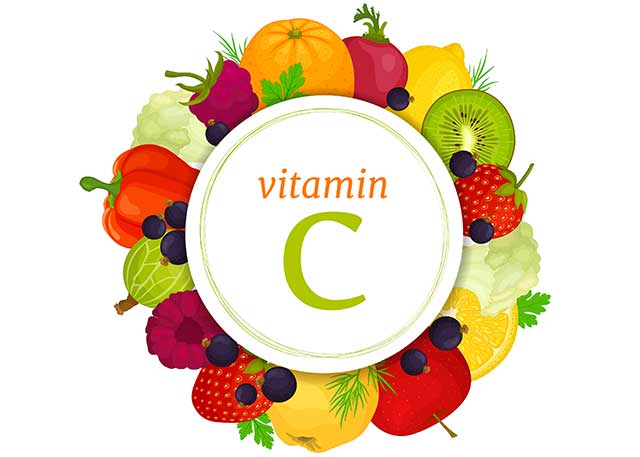
Red raspberries are one of the best dietary sources of vitamin C, offering 36% of the daily value per 123-gram cup serving (1)
Vitamin C is an essential vitamin that functions as an antioxidant in the body.
Among the numerous functions of the vitamin, it is responsible for the growth, repair, and maintenance of all cells. It also helps to protect the body against free radical-induced damage and oxidative stress (13).
4) High in fiber: good for digestive health
Red raspberries are one of the best choices of fruit for fiber content.
As shown in the nutritional composition table 1, raspberries contain 14.6 grams of carbohydrates and 8.0 grams of fiber per 123-gram cup (1).
In other words, more than half of the carbohydrate content of raspberries is dietary fiber. Additionally, 8 grams of fiber for only 64 calories makes raspberries one of the most fiber-dense foods.
Higher dietary fiber intake can have a range of benefits, and these can include:
- Improving the blood sugar response to a carbohydrate-containing meal (14).
- Binding potential carcinogenic compounds in the intestinal tract (15).
- Long-term health: higher fiber intake is associated with lower all-cause mortality in systematic reviews of the data (16).
- Improvements to gut health, digestion, and the health of the microbiota – the “good” bacteria that reside in the intestinal tract (17, 18, 19).
5) Red raspberries may have benefits for blood sugar control
Whenever we eat carbohydrate-containing foods, there is a postprandial (post-meal) rise in blood sugars as sugars enter the bloodstream (20). This is not something we should be concerned about and is a normal part of carbohydrate metabolism.
However, abnormally prolonged or excessive rises in blood sugar (hyperglycemia) can be an issue for individuals with insulin resistance and type 2 diabetes (21, 22).
Interestingly, different foods can have varying effects on blood sugar levels, and it is not solely their carbohydrate content that determines this. On this note, recent research has shown some potential benefits of raspberries for blood sugar regulation.
Randomized controlled trials on raspberry intake and blood sugar levels
A 2019 randomized controlled trial examined the effect of raspberries on blood sugar levels after eating a fast food meal in 25 participants with type 2 diabetes (23).
The participants were given 250 grams of raspberries (intervention) or a calorie and carbohydrate-matched 85 grams of banana. The study found that adding raspberries after the meal resulted in significantly lower blood sugar levels at two and four hours post-meal compared to the control.
In the banana control group, blood sugar was 206 mg/dL at two hours and 187 mg/dL at four hours. However, blood sugars were a significantly lower 172 mg/dL at two hours and 154 mg/dL at four hours in the raspberry intervention group (23).
Another randomized controlled trial published in 2019 examined the effect of red raspberries on individuals at risk for diabetes. In this study, adding 125 grams or 250 grams of red raspberries to a high-carbohydrate, moderate-fat meal reduced blood sugar and insulin levels compared to control (no raspberries) in the post-meal period (24).
6) A rich source of anthocyanin polyphenols
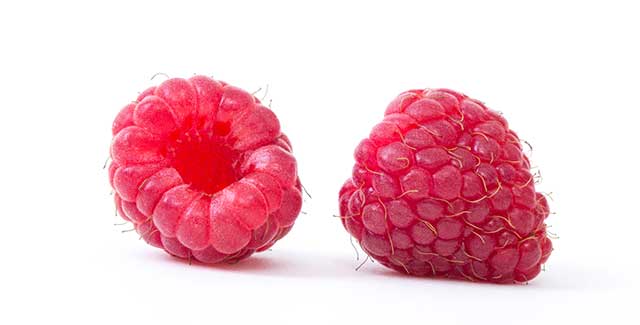
Similar to other varieties of berries, raspberries contain a high concentration of polyphenols called anthocyanins and ellagitannins.
Anthocyanins are one of the most-researched polyphenols. In this regard, a 2019 systematic review of 19 randomized clinical trials showed that (25):
- Anthocyanins improved markers of beta cell function and insulin resistance.
- Anthocyanin supplementation significantly lowered total cholesterol and “bad” LDL cholesterol (reduction: 8.60 mg/dL) at a dose of 300 mg per day.
Let’s put this 300 mg into context; according to Phenol-Explorer, the most comprehensive database on polyphenol content in food, fresh red raspberries contain 72.5 mg of anthocyanins per 100 grams. Thus, the corresponding 300 mg anthocyanin ‘dose’ would be slightly over 400 grams of fresh raspberries (26).
It is also worth noting that black raspberries are king in polyphenol and anthocyanin content; they contain significantly more than the amount found in red raspberries.
7) High In Manganese
The most concentrated mineral in raspberries is manganese; the berries contain 36% of the mineral’s daily value per 100 grams (1).
Manganese has a wealth of functions in the human body, and it is essential for optimal bone health, wound healing, and metabolism (27).
The mineral is quite prevalent in food, but raspberries still provide a significant amount.
8) Red raspberries To Improve Gut Health
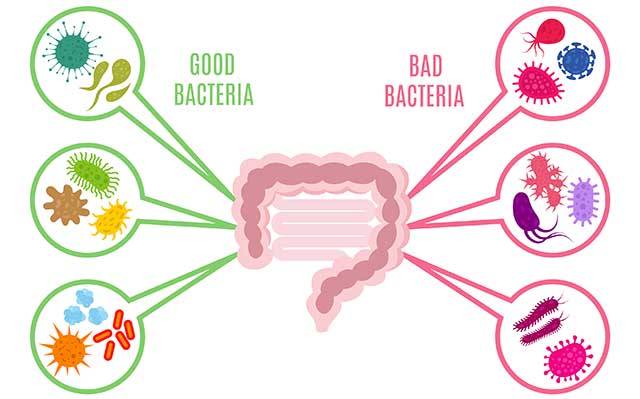
A 2022 randomized controlled trial involving twenty-six adults with prediabetes found that four weeks of red raspberry intake (125 grams) positively impacted the gut microbiota (28).
Specifically, the gut microbiota changes included;
- The prevalence of Eubacterium eligens increased by 100%.
- Ruminococcus gnavus decreased by 60%.
Research on the microbiota is in the early stages, but a higher prevalence of Eubacterium eligens is thought to have potential protective effects against disease states. The mechanism behind this may be lowering cholesterol and reducing inflammation in the gut (29).
In contrast, current research finds associations between Ruminococcos gnavus and inflammatory and metabolic diseases (30, 31).
The 2022 randomized controlled trial also demonstrated that 125 grams of red raspberries daily over four weeks lowered LDL cholesterol by 7.2% from baseline (28).
Do Fresh and Frozen Red Raspberries Differ Nutritionally?
When considering raspberries (or any other berries), many wonder whether buying fresh or frozen makes a difference. In this regard, frozen raspberries can be appealing due to their comparative affordability and longer storage time.
The good news: a study investigating the nutritional composition of fresh and frozen red raspberries found no significant difference between the two. In this study, researchers recorded the level of vitamins and phenolic compounds in fresh raspberries and then froze the berries.
After analyzing the frozen berries, the researchers found no significant nutritional differences in vitamin C and polyphenol content. The researchers concluded that freshly picked, fresh, and frozen raspberries all contain similar levels of phytochemicals and vitamin C (32).
Therefore, whether you buy fresh or frozen raspberries likely isn’t overly important concerning the nutrition profile. Fresh and frozen are both excellent choices, and purchasing decisions are a matter of price, convenience, and personal preference.
Tasty Ways To Incorporate Red Raspberries Into a Diet
Although raspberries taste delicious on their own, here are some simple but tasty ways to incorporate them into a meal or snack.
Raspberries and yogurt
Raspberries taste great mixed into plain yogurt for some added flavor and sweetness
For a healthy and straightforward raspberry yogurt, all you need is two ingredients:
- 1 cup (123g) raspberries
- 1 cup (120g) yogurt
Fresh berries and yogurt also make a healthier ‘dessert’ option for children, offering protein, dietary fat, probiotics, vitamin C, and polyphenols.
Nutty dark chocolate raspberries
To make a batch of dark chocolate-coated raspberries, use the following recipe:
- 200g dark chocolate
- 1/2 cup (62g) of raspberries
- 1 oz (28g) of chopped nuts
First, slowly melt the dark chocolate on the stove and add the nuts and raspberries. Carefully ensure the nuts and raspberries are fully coated in the chocolate mix.
Next, pour the coated mix into a fridge tray and wait for it to cool. Once cool, place the tray in the refrigerator.
Once the chocolate fully hardens, cut and serve.
In cereal/porridge
For those who enjoy porridge or cereal, raspberries make a great topping. Just add a cup of raspberries and mix them in.
Raspberry protein smoothies
Blending protein powder with some raspberries and water (or milk of choice) makes a nutritious smoothie.
This works best with frozen raspberries, which results in a cold and thick smoothie.
Final Thoughts
Red raspberries are a high-fiber fruit that provides a rich source of vitamin C and polyphenols.
The berries have several proven (and some potential) benefits and will make a great addition to most people’s diets.
As a bonus, raspberries taste delicious and are an excellent option for a healthier dessert.
For more on fruit, see this guide to the highest-fiber fruits.
For more articles about berries, see this review of cranberry fruit.



